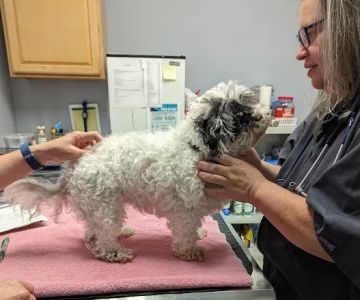- 1. Introduction
- 2. Why Flea and Tick Prevention is Important for Pets
- 3. Diseases Transmitted by Fleas and Ticks
- 4. Flea and Tick Prevention Options for Pets
- 5. How to Choose the Right Flea and Tick Prevention for Your Pet
- 6. When to Start Flea and Tick Prevention
- 7. Conclusion
1. Introduction
Fleas and ticks are more than just an annoying nuisance for pets; they can also pose serious health risks. As a responsible pet owner, it’s essential to understand why pets need flea and tick prevention and how it can protect their well-being. These tiny parasites not only cause discomfort but can also carry and transmit dangerous diseases, making prevention a critical part of maintaining your pet’s health.
In this article, we will delve into the reasons why flea and tick prevention is crucial, the diseases associated with these pests, the various prevention options available, and how you can choose the best protection for your pet. Whether you're new to pet care or seeking to refresh your knowledge, this guide will provide essential insights to keep your pet safe and comfortable.
2. Why Flea and Tick Prevention is Important for Pets
Flea and tick prevention is an essential part of responsible pet care. These parasites can infest your pet at any time, especially during warmer months. They not only cause itching and discomfort but also lead to more severe health issues. Without proper prevention, fleas and ticks can impact your pet’s overall well-being, leading to a host of potential complications.
Fleas, for example, can cause flea allergy dermatitis (FAD), leading to itching, hair loss, and skin infections. A single flea bite can lead to intense discomfort, and the continuous scratching can cause sores and secondary infections. Ticks, on the other hand, are even more dangerous as they can transmit diseases like Lyme disease, Rocky Mountain spotted fever, and babesiosis, which can be life-threatening if not treated promptly.
Thus, prevention is key. By protecting your pet from fleas and ticks, you can avoid these health issues and keep your pet comfortable and safe throughout the year.
3. Diseases Transmitted by Fleas and Ticks
Fleas and ticks are more than just a cosmetic issue—they can be carriers of various diseases that affect both pets and humans. Some of the most common diseases transmitted by fleas and ticks include:
- Lyme Disease: Caused by a bacterium transmitted through tick bites, Lyme disease can lead to symptoms like fever, lameness, and kidney problems. If left untreated, it can cause permanent damage to your pet’s organs.
- Rocky Mountain Spotted Fever: This disease, spread by ticks, can cause fever, vomiting, and abdominal pain. If untreated, it can be fatal.
- Babesiosis: A tick-borne disease that infects red blood cells, babesiosis causes symptoms such as anemia, lethargy, and fever. This condition can be particularly dangerous if not treated in time.
- Flea Allergy Dermatitis (FAD): This condition occurs when a pet is allergic to flea saliva. It can lead to intense itching, hair loss, and skin infections.
These are just a few examples of the diseases associated with flea and tick infestations. By ensuring that your pet is protected from these pests, you can help prevent these dangerous health issues and ensure your pet stays healthy and happy.
4. Flea and Tick Prevention Options for Pets
There are several effective flea and tick prevention options available to pet owners. Depending on your pet’s needs, lifestyle, and the level of exposure to fleas and ticks, you may choose from the following prevention methods:
- Topical Treatments: These are liquid treatments applied directly to your pet’s skin, typically between the shoulder blades. They work by killing fleas and ticks on contact. Popular brands include Frontline, Advantage, and Revolution.
- Oral Medications: Oral flea and tick medications, like NexGard or Bravecto, are ingested by your pet and provide protection from fleas and ticks for a set period. These treatments are highly effective and are easy to administer.
- Flea and Tick Collars: Collars that release flea and tick-repelling chemicals over a period of time can provide long-lasting protection. Seresto collars are a popular option, offering up to eight months of protection.
- Flea and Tick Shampoos: Shampoos specifically designed to kill fleas and ticks can be used as a part of your pet’s regular grooming routine. While effective, shampoos typically don’t offer long-term protection, so they should be used in combination with other preventive measures.
Each prevention option has its benefits and limitations, and the best choice depends on factors such as your pet’s age, size, health condition, and lifestyle. For example, pets who spend a lot of time outdoors in tick-prone areas may require more frequent treatments or oral medications for greater effectiveness.
5. How to Choose the Right Flea and Tick Prevention for Your Pet
Choosing the right flea and tick prevention method for your pet depends on various factors. Here are some important considerations when making your decision:
- Age and Size: Some flea and tick prevention products are formulated for specific age groups or sizes of pets. Make sure you choose a product suitable for your pet’s weight and age.
- Health Condition: If your pet has underlying health conditions, consult your veterinarian before choosing a prevention method. Some treatments may not be suitable for pets with certain health issues.
- Lifestyle: If your pet spends a lot of time outdoors, especially in wooded or grassy areas, it may need stronger protection. On the other hand, indoor pets may only need occasional treatments.
- Convenience: Consider your lifestyle and the ease of application. Some pet owners prefer oral medications for their convenience, while others may opt for topical treatments or collars for long-lasting protection.
It’s always a good idea to consult with your veterinarian to find the best flea and tick prevention for your pet’s unique needs. They can recommend the most effective products based on your pet’s specific situation.
6. When to Start Flea and Tick Prevention
Flea and tick prevention should begin as soon as your pet is old enough, typically around 8-12 weeks of age, depending on the product. Even if your pet is an indoor pet, it’s important to start prevention early, as fleas and ticks can enter the home on clothing or other animals.
Flea and tick seasons vary by location, but in general, it’s best to start treatment in the spring and continue through the fall, when flea and tick activity is at its highest. In some areas, fleas and ticks may be active year-round, so year-round prevention may be necessary.
7. Conclusion
Flea and tick prevention is a vital aspect of pet care that should not be overlooked. These tiny pests can cause significant harm to your pet’s health and well-being, as well as transmit dangerous diseases. By choosing the right prevention method, starting early, and consulting with your veterinarian, you can protect your pet from these health risks and ensure they remain happy and healthy.
If you're looking for the best flea and tick prevention options for your pet, visit Hidden Brook Veterinary for expert advice and the latest products to keep your pet safe from fleas and ticks.
SEO Title: Why Pets Need Flea and Tick Prevention: Protect Your Pet’s Health
SEO Keywords: why pets need flea and tick prevention, flea prevention for pets, tick prevention for pets, best flea and tick prevention products
SEO Description: Learn why flea and tick prevention is essential for your pet's health, the diseases caused by fleas and ticks, and the best prevention methods to keep your pet safe and healthy.











